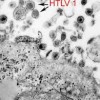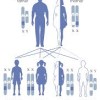An outbreak of necrotizing enterocolitis. Association with transfusions of packed red blood cells
Abstract
Of 187 newborns admitted to a 33-bed, level III neonatal intensive care unit between January 1, 1985 and June 23, 1985, 33 developed necrotizing enterocolitis during their hospital stay. Twenty of the 33 newborns (61%) had onset of symptoms between April 1 and June 23, suggesting clustering during this period.… Read more



